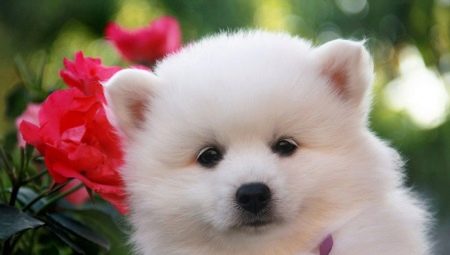Like the German Spitz, the Japanese variety of this breed has an equally rich history. White dogs have their own characteristics of character, behavior and exterior features.
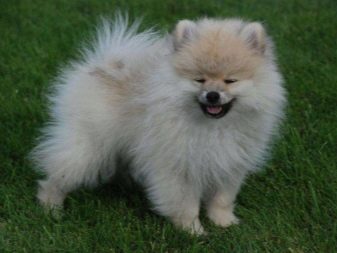
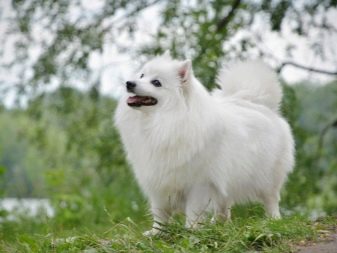
Breed history
According to the cynological community, Japanese Spitz are descended from the breed of Samoyed huskies. Unfortunately, this theory cannot be proved, nor can it be disproved, due to the fact that northern dogs are relatives of modern types of dogs.
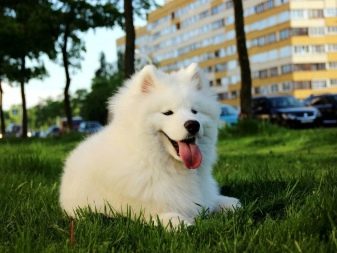
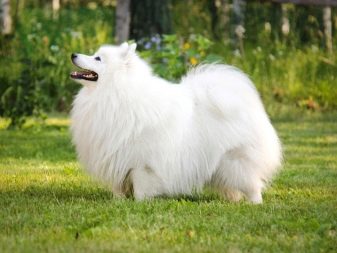
Officially, it is believed that Japanese Spitz was bred in Japan, which is why it got its name. The time between the birth of the breed is considered to be the interval between 1920 and 1930. During this period, German dwarf Spitz were brought to Japan. They became the progenitors of the Japanese subspecies of this breed.
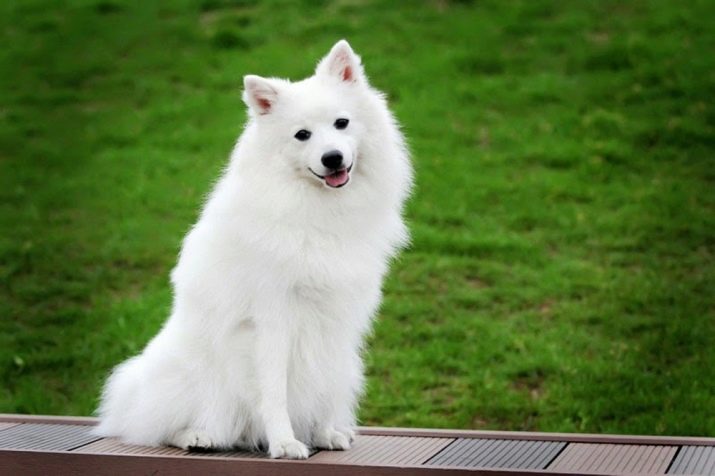
In 1921, an animal exhibition was held in Tokyo, where the public was able to contemplate German Spitz brought from Europe. Animals immediately won the sympathy of people, so the local breeders decided to breed a similar breed.
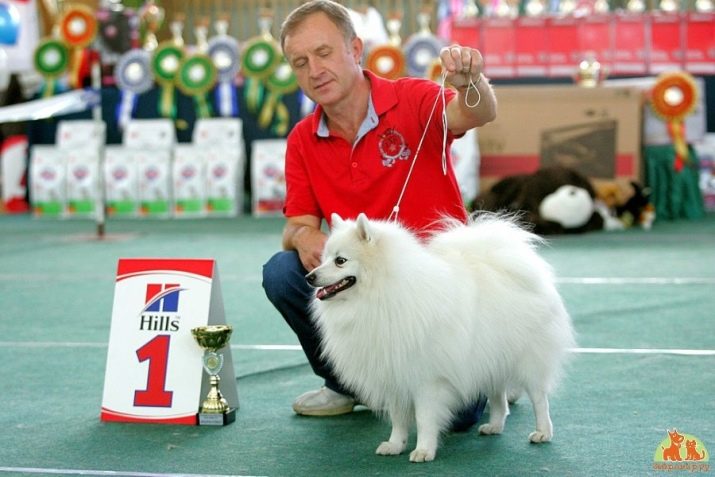
During a long selection, the Japanese managed to get a new breed of dog. Snow-white dogs received their recognition from the cynological federation only in 1964. Ten years later, the breed was recognized as a dog club in the UK.
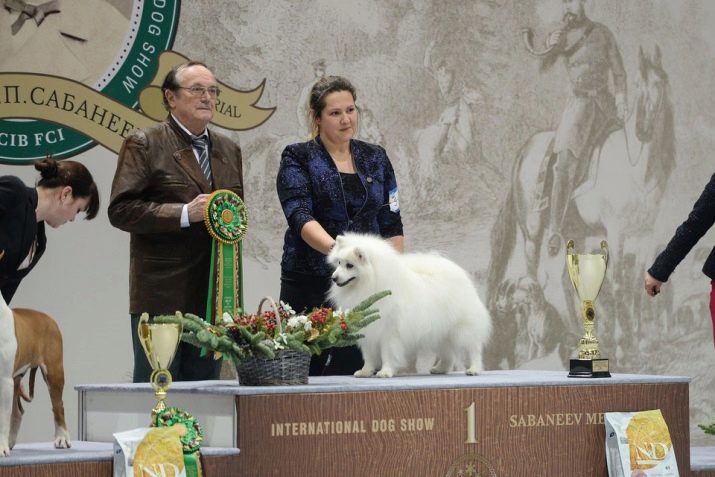
From this year, the spread of Japanese Spitz around the world began. Today this breed is not wanted by dog handlers of only one country - the USA. In their opinion, the Japanese dog looks very similar to Eskimo dogs.
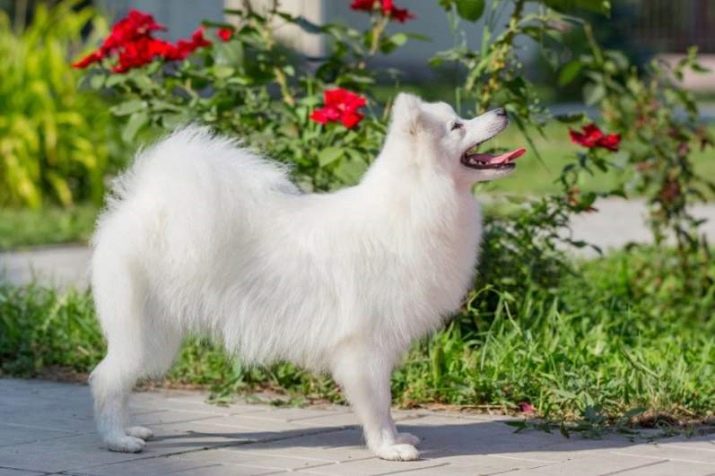
Description
Japanese Spitz differs from the classic look in body configuration and structure of the muzzle. It immediately shows the eastern influence.
The animal is small, with thick snow-white hair, the muzzle is pointed, like a "fox", the ears are high-set, triangular in shape, the tail is rolled into a ring.
Read more about the exterior of the breed.
- Head. The size of the muzzle is medium, the bones of the nape are wide, as are the frontal. The transition in the forehead to the crown region is pronounced. The nose area is neat, elongated, the tip is painted black. The eyes are dark brown, almond-shaped, surrounded by black eyelids. Glance straight, curious. Jaws medium, well developed fangs. Scissor bite. Lips fit tightly to the mouth, without sagging. The surface of the lips is black.
- Body. The format of the body is square. The body is harmoniously complex, the skeleton is developed. Under the wool, well-developed muscles are clearly visible. The cervical region is medium in length, wide. The dimensions of the body and limbs are proportional. The back is flat, without deflection. Thoracic oval, ribs divorced. The stomach is tightened, not sunken. The skin is elastic, does not form folds. Female feminine, graceful, elongated. Males, on the contrary, are stocky, densely formed.
- Limbs. Paws straight, parallel set. The shoulder together with the shoulder blade form an even angle, the elbows are not twisted. The thigh is wide, strong. The step is quick, measured. The paw brushes are rounded, the fingers fit tightly together, the nail plate is black, as are the paw pads.
- Tail. Highly placed above the back, saber-shaped, which allows it to fit into the ring.
- Wool. Dogs have a dense undercoat with long light hairs. On the chest, the hair forms a lush collar. The hair in the area of the shoulders, sternum is long, the hair is shortened on the face and front of the legs. The tail is voluminous, with a fringe.
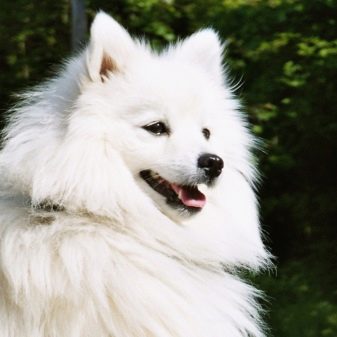
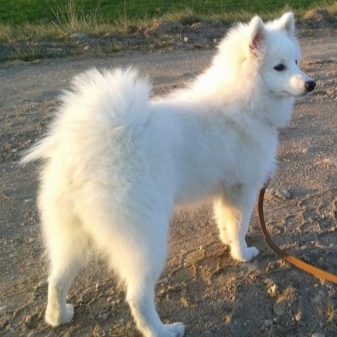
The average life span of Japanese Spitz is 13 years. Subject to the rules of care and maintenance, the life of the pet may be longer.
Japanese Spitz are different quick-witted, easy to train, can serve as a companion dog or act as a watchman. Good nature helps the dog to easily adapt to people, small children. The price of a dog of this breed ranges from 25 to 60 thousand rubles.

Character
The breed is friendly, cheerful. The animal quickly makes contact, easily gets used to the owner and his family, without showing any signs of aggression. Spitzs love children, treat babies well, but they will not become a nanny.

The main distinguishing feature of dogs is silence. Unlike mini-Spitz, the pet does not vote right and left, the dog practically does not bark. Due to the silence of the dog, some owners begin to think that the pet has health problems, but this is not so. The Japanese cast their voice only in case of alarm, danger, fear. The rest of the time they can whine or sniff slightly, snort.
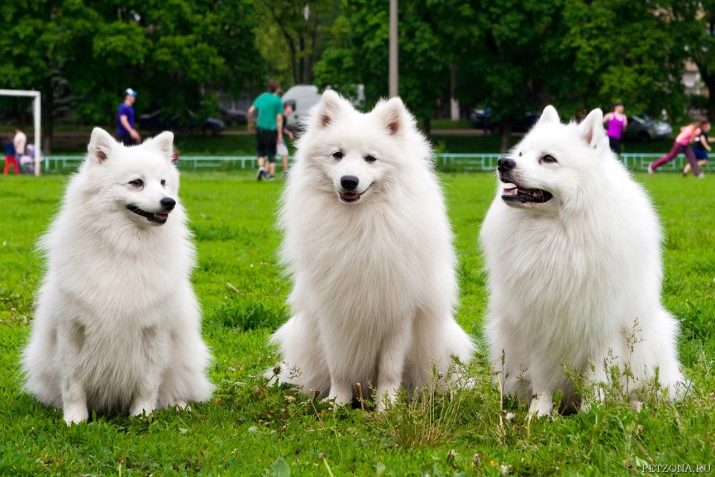
Japanese Spitz are constantly on the move, being active anywhere. They prefer boredom games. The pet needs to purchase a variety of toys, and the owner must devote more time to walking with the animal.
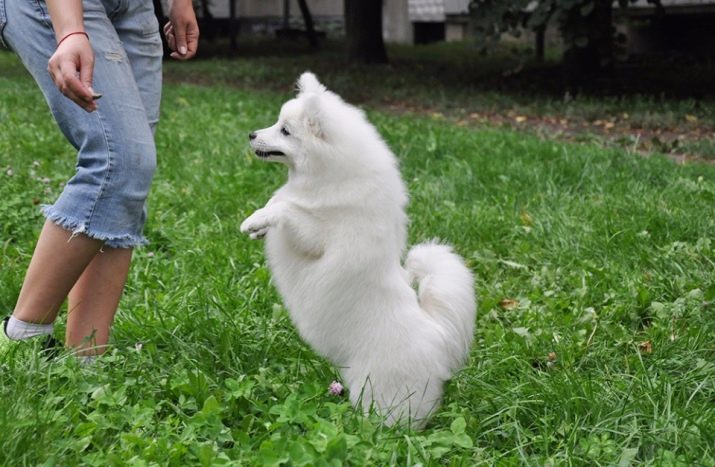
Spitz will happily share a morning run in the park. The dog makes good contact with representatives of other breeds or with other animals. The absence of hunting instincts allows her not to chase cats, squirrels, small rodents.
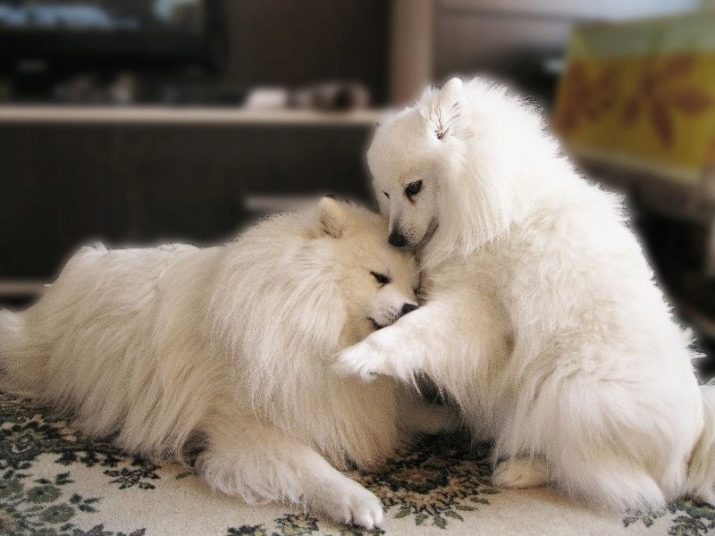
Oriental dogs will not tolerate dirt, these dogs are extremely clean. They cannot live in cluttered rooms.
The mind and the complaisant nature of the animal allow him to quickly memorize commands and perform various tricks. Dogs will not wake up the owners in the morning or beg for a treat when not allowed.
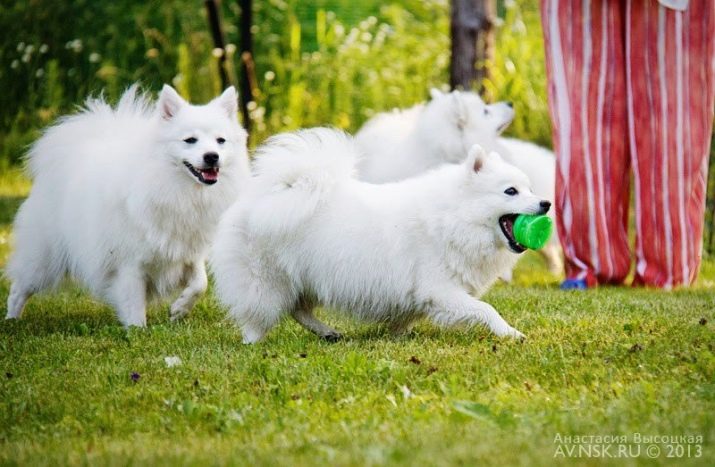
They are loyal to the owners, show a feeling of tenderness, require affection, but are not intrusive. Japanese Spitz is great for families with children, phlegmatic, or melancholic.
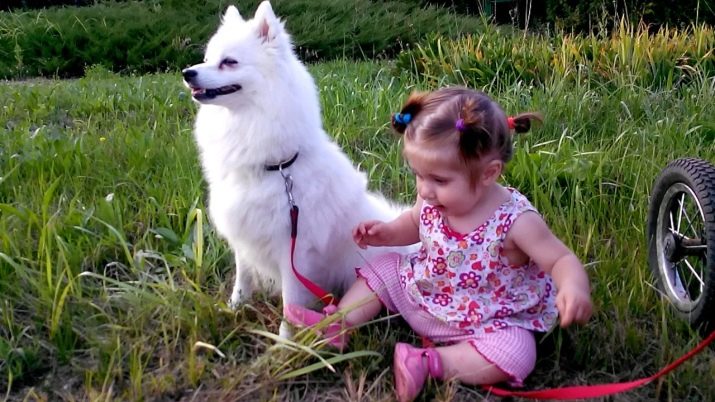
Color
The color of this breed can be only one - white. The presence of color spots, specks, marks or other signs on the dog’s snow-white fur coat is considered to be defects.If the seller offers you under the guise of a Japanese spitz of animals with a red, black or gray fur coat, be aware that this is a hoax.
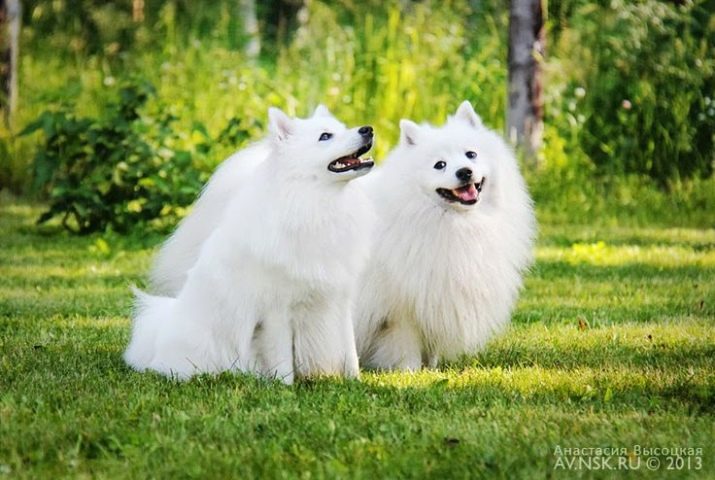
In this case, all the mucous membranes, as well as the paw pads of the dog should be painted black.
Height and weight
Dogs at the withers reach 40 cm, females no higher than 35 cm. The weight of an adult dog is 10 kg, and females up to 7 kg.

If you buy an adult individual with a height of up to 30 cm or less than the standard in the Japanese breed, then you will be sold a regular Pomeranian or sick animal.
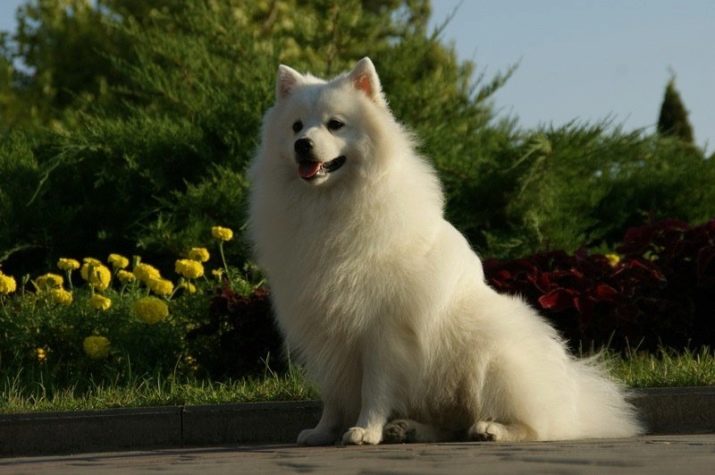
The animals are very similar in appearance, so you should always be guided by the signs of the exterior of the dog. It is also advisable to study the pedigree of the dog.
Advantages and disadvantages
The positive qualities of the animal include character. The good-natured disposition, balanced psyche of the animal and a sharp mind allow the dog to easily make friends. The absence of hunting instincts and aggression makes this breed a companion. The dog is cheerful, playful, requires long walks, but they pass in a positive way. These dogs practically do not bark, behave like aristocrats and do not give a voice to everything they see. In a house with young children this will be a big plus. The mind of the dog and its character help the pet to easily memorize commands without causing negative moments during training.
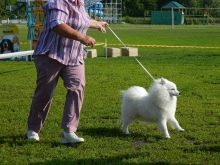
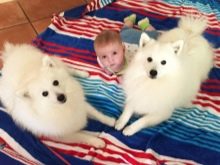
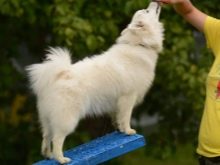
The disadvantages in the first place include the cost of the puppy. This breed is not cheap, purebred individuals cost an average of 60 thousand rubles. As with all breeds of decorative dogs, Japanese have hereditary diseases associated with vision or the digestive system. There are also acquired ailments. If the pet is properly looked after and periodically visited by the veterinarian, then the risks of sores can be reduced to almost zero.
In the process of molting, the dog sheds a lot of hair, so this breed is categorically not suitable for people suffering from allergies and those who do not like to find wool on their clothes and in the corners of the room.
How to choose a puppy?
Purebred puppies begin to wean from the mother at the age of 2 months. At this age, the pet already has external signs of the breed and a character has formed.

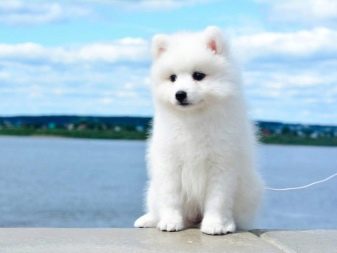
When buying a dog, you need to examine the documents attached to the animal. The pedigree of the dog, the metric of the puppy should be painted in them. It is also recommended to independently examine the dog’s parents. A veterinary passport is also attached to the baby, in which all the necessary vaccination marks should be.
It is advisable to observe the behavior of the baby and the conditions of his detention. The room should be clean, the baby - active, its mucous membranes without dirt, secretions. The puppy should have a good appetite.
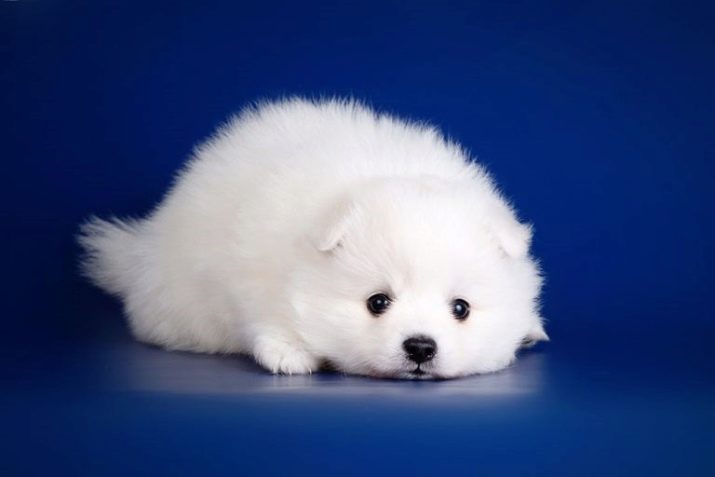
The low cost of the puppy may indicate a fraud of the buyer. Purebred representatives of the breed can not cost less than 25 thousand rubles, since they are in demand and rare in Russia.
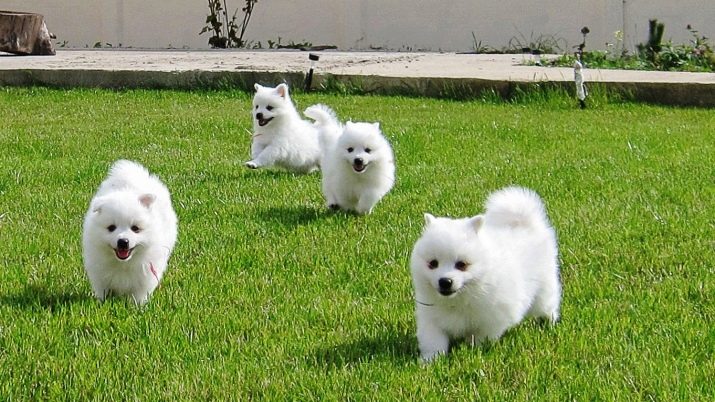
Toddlers or adults are recommended to purchase in special nurseries or from breeders with good reviews and full documentation.
Feeding
Most owners of the Japanese Spitz are inclined to believe that it is worth feeding the dogs only with feed at least premium, if you can’t provide him with a full balanced menu of natural food. For spitz suitable feed class holistic, super-premium, premium. These mixtures are enriched with minerals, vitamins, their composition is perfectly balanced.
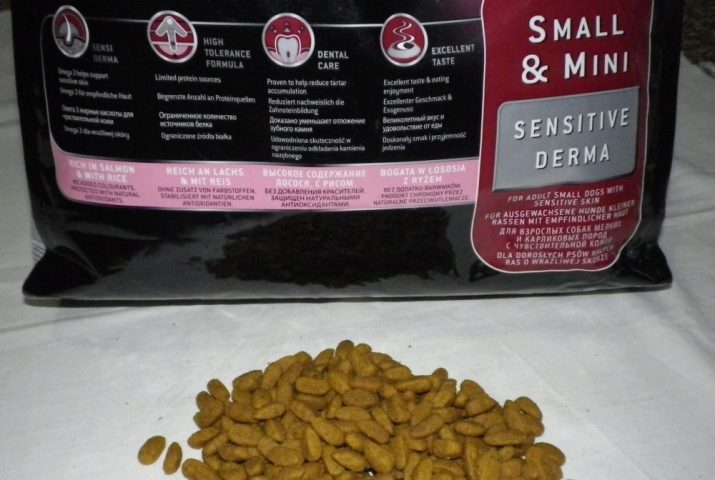
The diet is selected based on the following factors: the age and size of the dog, the health of the pet. Proper nutrition affects the quality of the animal’s hair, its stool, activity, the purity of the mucous membranes, and mood.
If you decide to feed the Japanese Spitz natural food, you need to create a balanced menu, which includes the following items.
- Meat - beef, poultry, offal. 25 grams per kilogram of adult weight.
- Cereal crops - rice or buckwheat.Served in boiled form without salt, seasonings, spices or other additives.
- Vegetables. They need to give a pet every day a little.
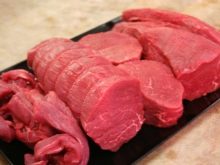
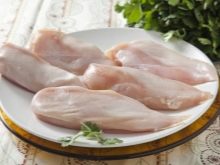
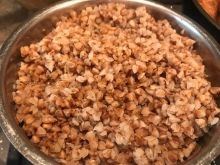
Food is served chopped into medium pieces so that the dog can easily survive them. Once or twice a week it is permissible to replace meat products with boiled boneless sea fish, treat the dog with boiled eggs of hens, quail, give a little cottage cheese, kefir.
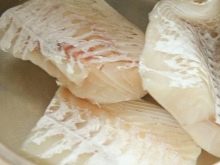
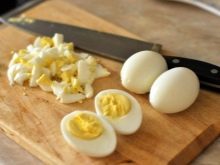

An important factor in pet feeding is access to clean drinking water. Water is replaced every day or once every half a day, it is advisable to keep the bowl away from the feeding zone in order to maintain the purity of the liquid. There may be several containers with water, they can be placed throughout the apartment in places where the pet most often lives.
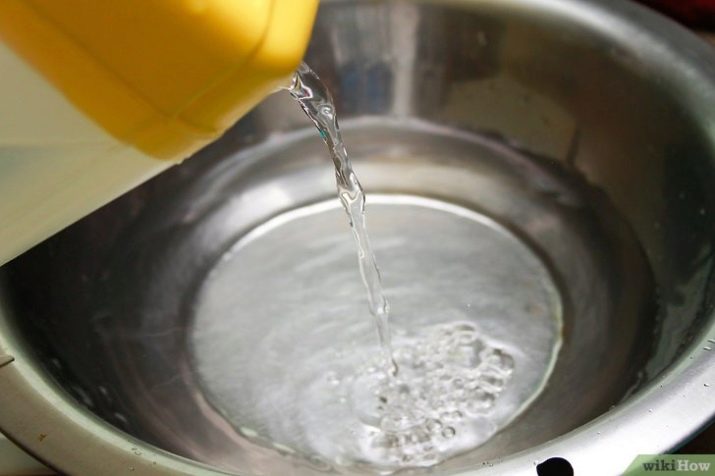
An important role is played by the diet of the dog. Puppies consume food up to 4 times a day, adult dogs eat 2 times a day. Feeding should take place at the same hours. It is forbidden to have snacks between meals. Such actions can lead to the fact that the animal will begin to refuse to comply with the regime and from normal food.
It is worthwhile to carefully monitor the dog’s reaction to food, as the breed is prone to allergic reactions. It is forbidden to give a dog smoked foods, as well as fatty, pickled or spicy foods. You can’t feed her sweets, flour products, hard meat.
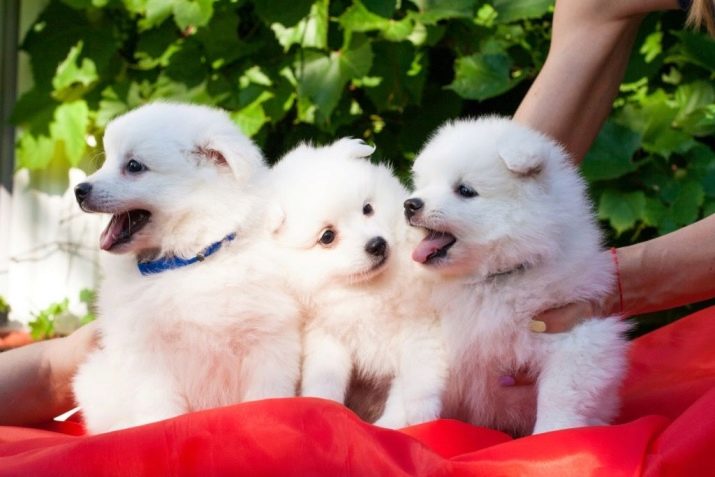
Care
Caring for a Japanese Spitz is straightforward. Attention should be paid to the condition of the animal’s hair, to clean eyes, ears, teeth.
Despite the fact that the dog itself is clean, it is still necessary to periodically conduct water procedures with it. Full bathing of the dog is carried out once every two months or before the show.

Water should be warm so that the animal is comfortable in it. To clean thick hair, special shampoos are used for long-haired breeds of dogs. You can also use tint shampoos to maintain the whiteness of the fur coat.
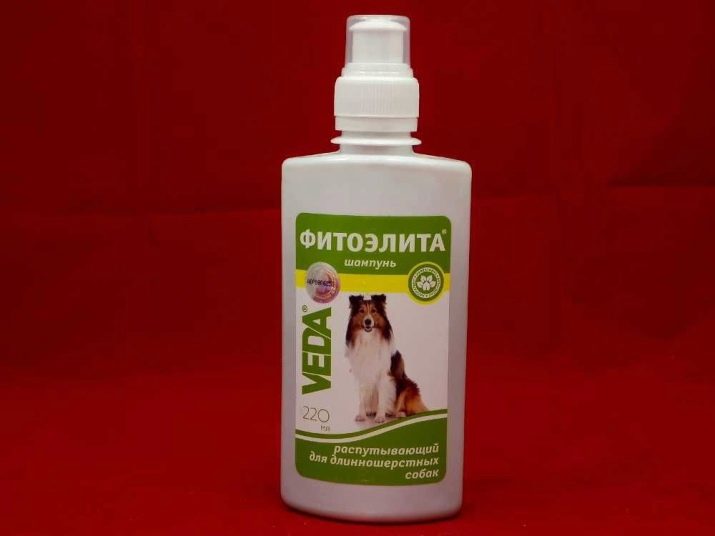
Aggressive or alkaline agents can ruin the quality of the pet's coat.
After the bath, the wool is wrung out, the animal is wrapped in a dry terry towel to remove excess moisture. If the dog is accustomed to hair dryer, then the coat can be dried with it. In another case, it is better to leave the pet to dry naturally.

The room in which the Spitz is located should be warm, without drafts.
Next, proceed to combing. For this procedure, it is worth using a massage brush. The hair is combed in different directions. During the molting period, bathing is not recommended, so that no tangles are formed, it is better to use a furminator or slicker instead of water procedures.
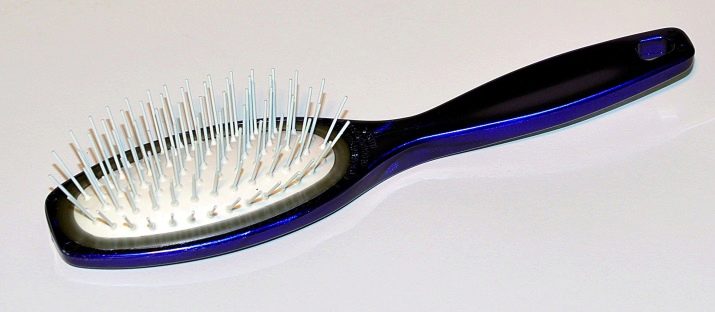
Each time after a walk or once a week when kept in the apartment, the ears and eyes of the animal are treated. Using a cotton pad moistened in a special lotion, the area around the eyes is treated. Auricles are best cleaned with a cotton swab, trying not to direct it deep into the ear. After a walk in nature, it is recommended to inspect the dog for ticks if a special collar has not been used.
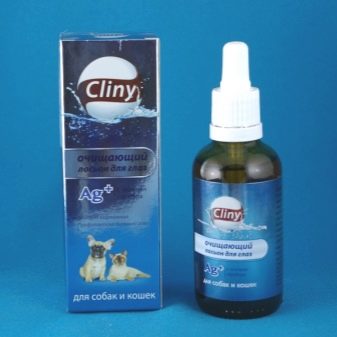
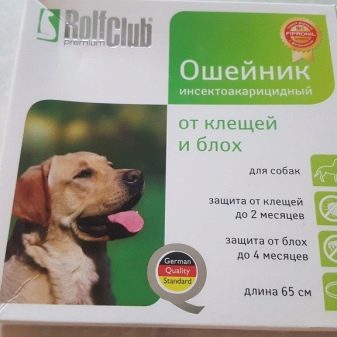
All items for care are purchased in veterinary pharmacies.
Japanese Spitz should be taught to brush your teeth from an early age. Cleaning is carried out using a special toothbrush that is worn on the finger. It uses tooth powder or paste for dogs and cats. It is recommended to clean the surface of the teeth twice a month or once a week, depending on what kind of food the dog eats. It is also recommended that you periodically visit the dentist.
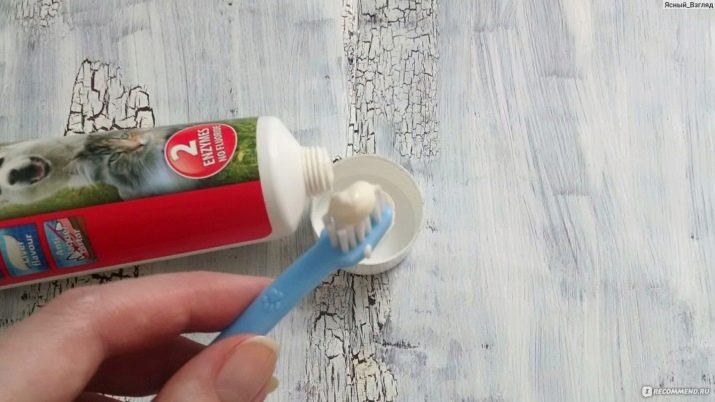
Claws of a dog, if she walks every day on the street, where the surface is paved with stones or asphalt, do not need to be shortened. In other cases, for the convenience of the pet, it is worthwhile to cut them once a month using a clipper.The procedure should be performed carefully, since the black color of the plate may interfere with the capillary channels that cannot be damaged. If there is no desire to do this procedure yourself, the animal should be taken to the veterinarian.
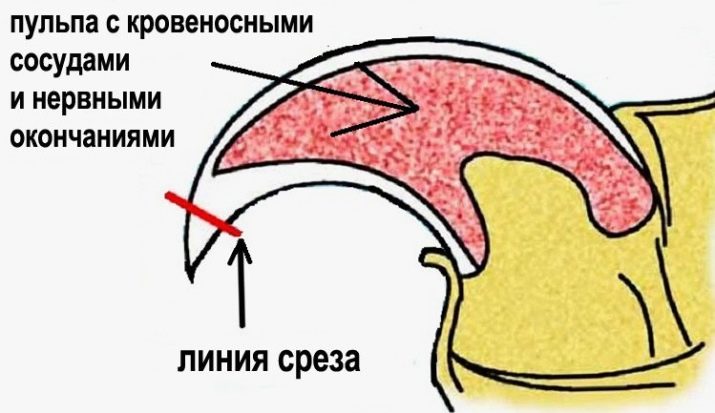
As a rule, the Japanese Spitz does not need a regular haircut. This procedure is carried out before participating in competitions, exhibitions. For grooming, special rounded scissors are used to make it easier to process the area of the paws and in the area between the pads. This helps to prevent dirt or other debris from sticking to the pet's paws. Haircuts in the anal area help to keep clean under the tail. Grooming allows you to give a beautiful silhouette to the body of the animal, its face, legs. Sheared dog looks especially impressive against the background of his usual brother.
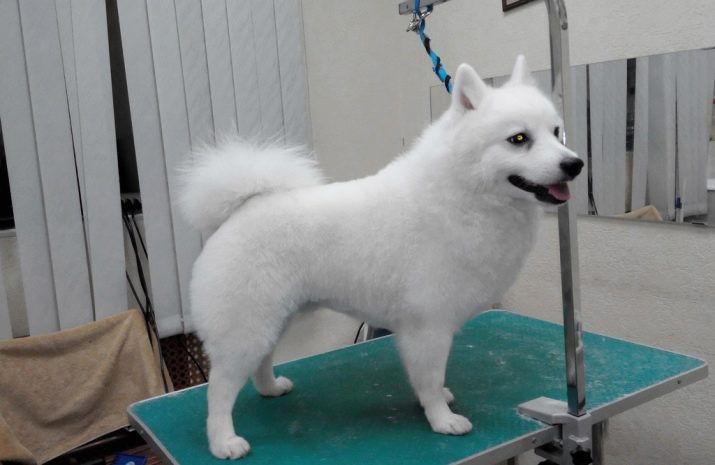
The animal needs daily walks. Duration of one walking should not be less than half an hour. The breed requires the purchase of additional toys that the dog will be occupied while in the apartment.
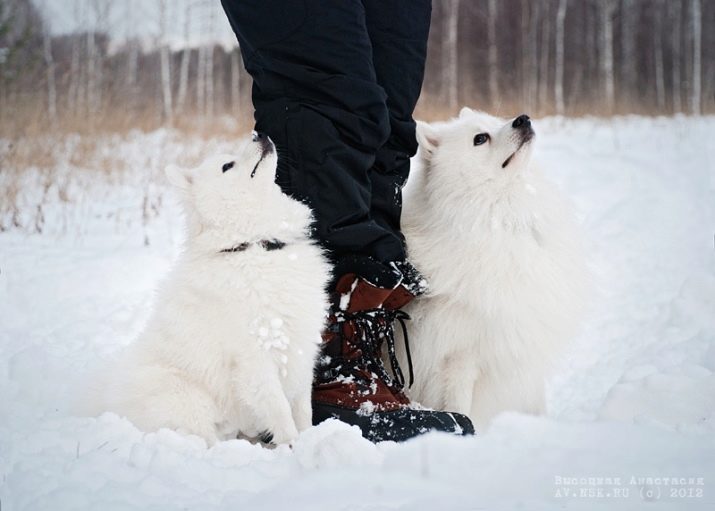
Breeding
Only healthy animals are allowed to mate. It is better to bring the female to the male on the 11th or 15th day of estrus and not earlier than in the second year of life. Males should also not be younger than two years old. Before this, the animals are properly walked, but not fed. Acquaintance of a couple takes place on the territory of the male. If an act of love happened during an acquaintance, do not intervene in this situation. The male can remain on the female or settle back to her. Do not try to separate the animals. Even if the female wants to break free, it is recommended to gently hold the pet and rid the animals of fright, stress.
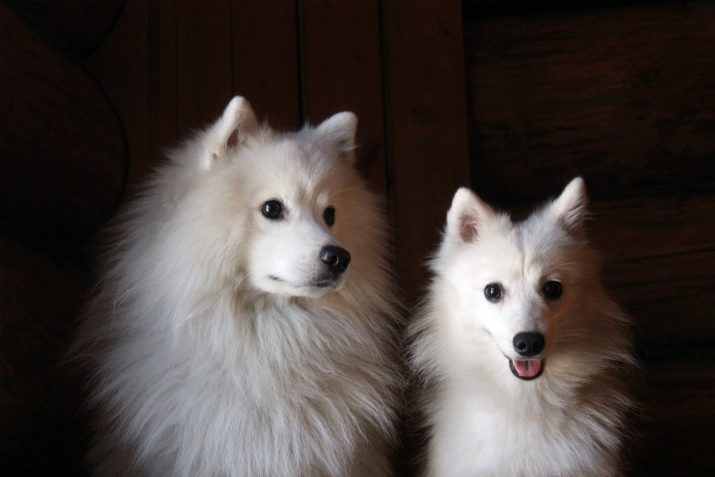
If the cross has not occurred and the male has lost interest in his lady, then it is recommended to re-meet the couple after a day or two.
Pregnancy is mostly without complications. The duration of gestation is 58-64 days. The first visible signs of pregnancy occur on day 35. Throughout this period, the animal needs increased care, better feeding, longer walks. Walking with a female is also necessary at her first request.
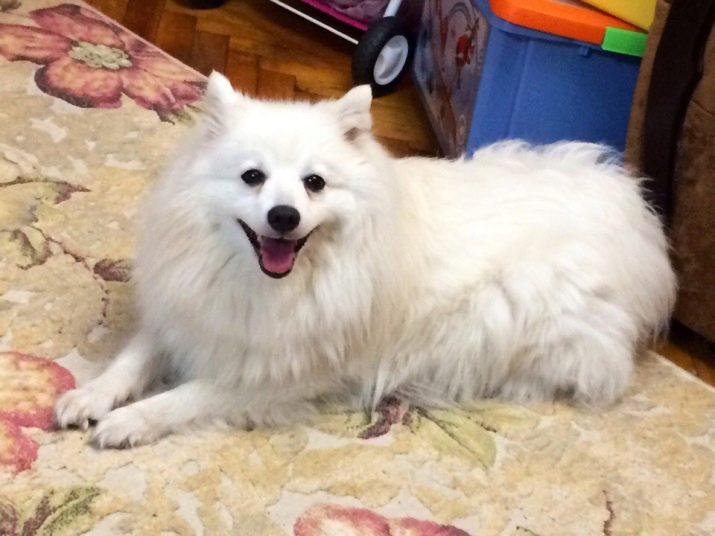
When the days of pregnancy come to an end, it is worth taking care of the preparation of the “maternity kit”.
It includes:
- clean rags or large disposable diapers;
- gauze napkins;
- materials for recording (pen, notebook, measuring tape);
- packaging for the placenta;
- heated container or box with a heating pad for puppies;
- preparations for sterilization of instruments;
- scissors, clamps.
You may not have to use a maternity kit, since delivery in most cases does not require human involvement. It is also recommended that you get a veterinarian who can come to an emergency call. A doctor about childbirth should be warned in a couple of days.
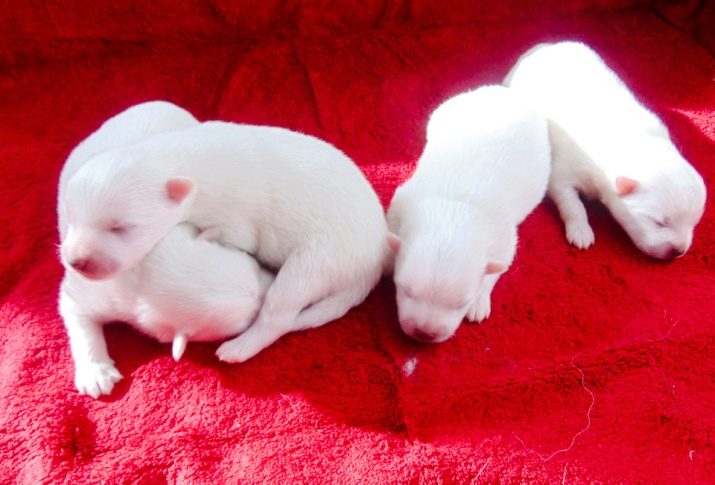
The only thing that can help the pet - is to cleanse the newborns from the afterbirth: remove mucus in the eyes, mouth, ears. After all the kids are clean, puppies are metric.
Health
Japanese Spitzs are notable for good health, however, dogs are prone to diseases of the digestive system (inversion of intestines, ulcers), sometimes they have vision problems (cataracts). To reduce the risk of ailments, the pet should be fed a balanced diet, regularly wipe his eyes after a walk, especially in windy weather. An increase in portions or frequency of feeding can lead to obesity, problems with the gastrointestinal tract.
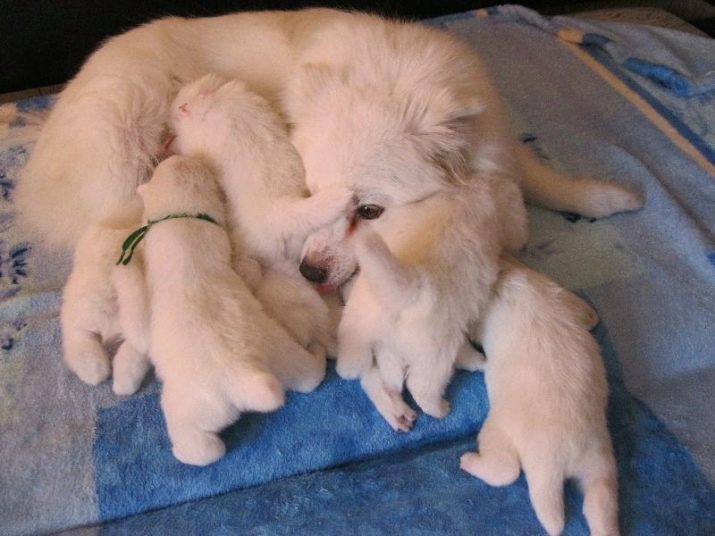
Upon reaching old age dogs acquire oncological diseases, hormonal failure is possible.
Training
Unlike Pomeranian Spitz, who, without training, become moody and aggressive, the Japanese breed does not particularly require training, but it can still learn all the teams. Training should not be exhausting, training should be carried out in a playful way, combining it with a walk.
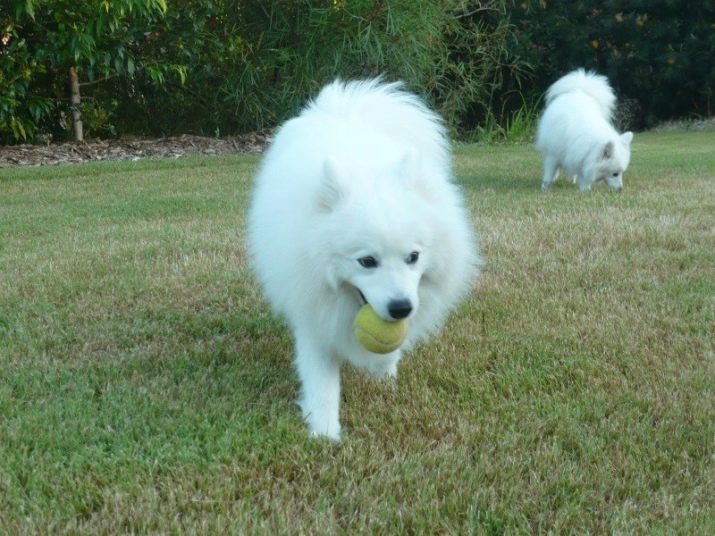
It takes about 3 days to work out one team. Any team should be practiced daily for no more than an hour. Training puppies should start at 3 months of age, because at the age of 1 month the dogs are still too small and do not understand what they want from them.
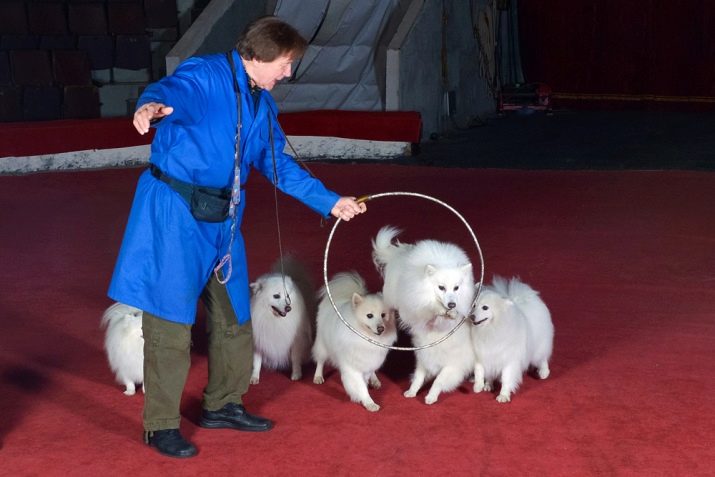
If the pet sleeps with the owner, he will quickly get used to his bed and abandon his place. Each dog should have its own bed.
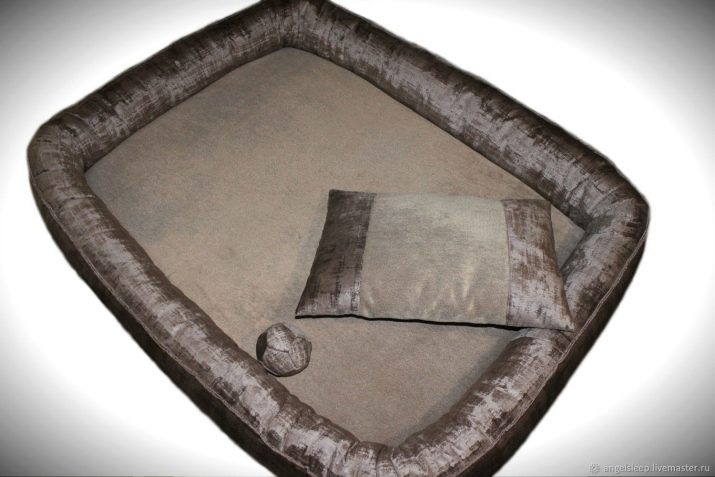
Aggressiveness or stupidity in the behavior of Japanese Spitz almost never occurs, since such negative traits in the character of individuals were immediately discarded during selection. If for some reason you got an unbalanced dog, the pet should be taken for re-education to the dog handlers. Professionals will be able to adjust the behavior of the animal.
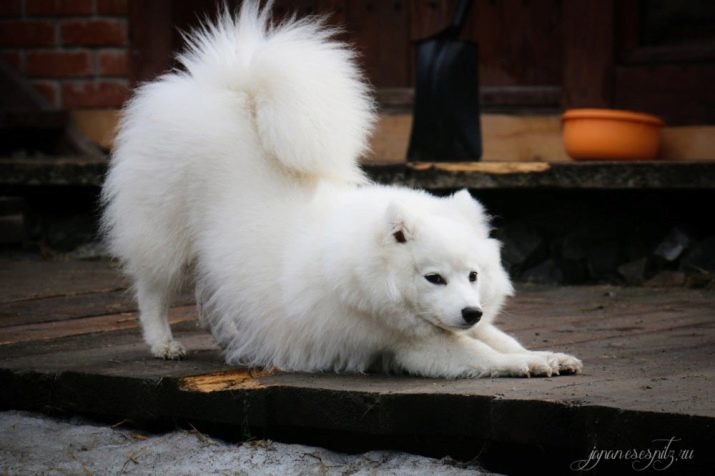
Owner reviews
Reviews of owners of Japanese Spitz are mostly positive. Owners like the good nature of pets, their cohabitation with other animals, small children. The lack of barking suits all family members and neighbors. Dogs do not bark in the morning or at people passing by, they behave extremely calmly, aristocratically. The animal does not offend the owner and his family.
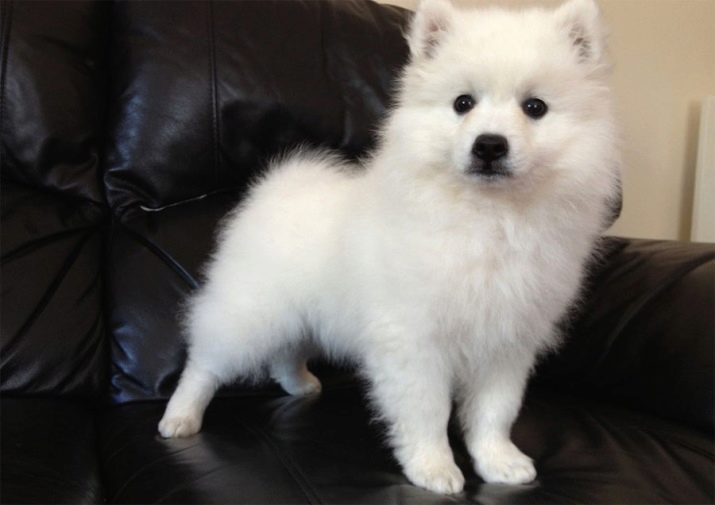
For some, the increased activity of the dog is sometimes done as a minus, but the problem is easily solved if there is a country house where the pet can be let out for a walk in a fenced area. It is better to start a dog for active young couples. Health problems they begin most often in old age. Feeding a pet does not cause any difficulties.

The rarity of the breed and the price sometimes do not allow anyone to buy a pet. In general, Japanese Spitz are suitable for urban and suburban life and are excellent companions.
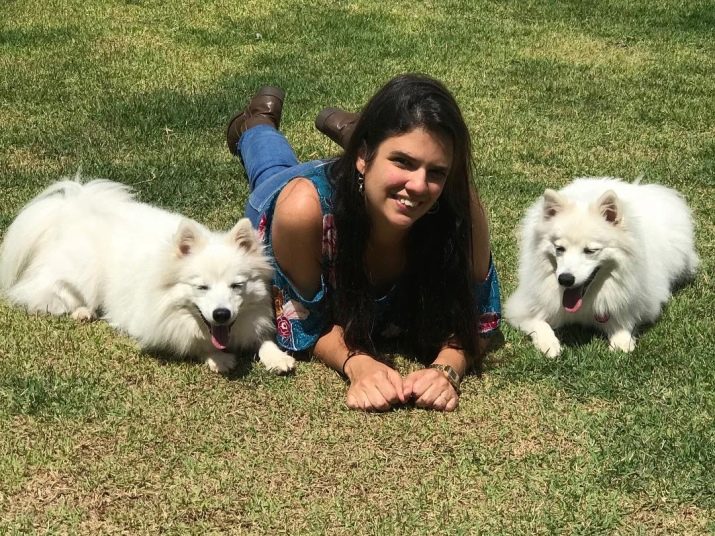
In the next video, see the features of this breed of dogs.
